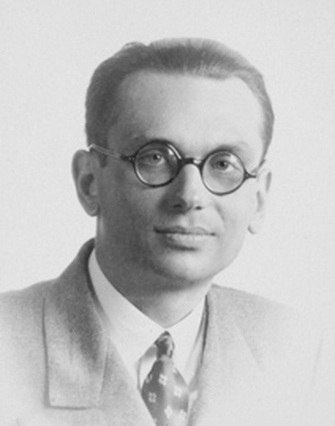 "Kurt Godel" via Arithmeum Museum in Bonn "Kurt Godel" via Arithmeum Museum in Bonn The great 20th century mathematician Kurt Gödel also wrote a trifling little proof that God exists.
My recent Decoded Science article, "How Modal Logic Proved Godel was Right, and God Exists", introduces the logic Gödel used and how computers verified the validity of his proof.
I've also publicized this article in my DeHaan Services blog's "From Kurt Godel to God via Modal Logic". It puts a Canadian spin on the topic. It also recommends a couple of books: one about Gödel 's life and work; the other that explains his famous Incompleteness Theorem in a whimsical manner.
One Niche Writing Tip
My Decoded Science article began as a challenge from my editor: could I write it overnight? The news media had learned about the proof of Gödel's God theorem, and my editor wanted us in the mix.
My first estimate was that it would take all night for me to touch on all the elements of Gödel's proof:
- What did Gödel write?
- How was his proof verified?
- What computer programs were used? What were their niche functions?
- What is this "modal logic" that was so important to both his writing and for the verification?
I quickly realized I couldn't cover everything. However, the niche I could fulfill was explaining "modal logic" (once I'd briefly covered Gödel's God theorem).
That only took half a night; much better than estimated, and much more likely that someone would read.
So today's writing tip is to select a niche within one article, when the overall topic is far too large. You're better off covering one thing well, than spreading yourself too thin.
My bonus writing tip is that you will do better writing a series of articles about that topic, with each article filling a specific niche. With regard to Gödel's God theorem, I could still research and write about the computer programs. In fact, each program (such as "Sledgehammer") could be the foundation for a few articles that explain how and why its approach is important and unique for computer-generated theorem verification.
Thanks for reading about Gödel's new niche, the God theorem.
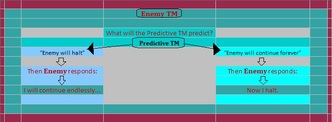 "The Enemy of the Predictive Turing Machine" by Mike DeHaan "The Enemy of the Predictive Turing Machine" by Mike DeHaan
One Writing Tip thanks to a Free-Will Editor
Months before I wrote "Free Will...", I'd already explained the basics of Turing Machines in a series of articles in Decoded Science.
However, one must not assume that every reader knows the background. That's especially true of Turing Machines in this article, since many readers might be drawn first to the "free will vs determinism" question.
So I touched on the bare details about Turing Machines and the Halting Problem.
I listed & linked back to all my previous articles at the end of this one. I also added a note to the editor that I knew this was not a good approach, but that some readers would need the reference material.
My editor brilliantly put the links to my previous articles into the "bare details" of background, rather than in a list at the end.
My second-hand writing tip, based on this free-willed editor's approach, is to follow suit. If you have background articles, and you touch on those topics in your new article, add that link in the background or introduction.
You could use the same approach in other places. If you've written about the classic "Dick and Jane" primary reader books, build in the links to the character pages.
"The book invites the reader to share in Dick and Jane's their first adventure. Just remember that Spot is a dog; you should not see spots before your eyes". (No, those are not real links from this article).
Remember that quoting the full title of an article intrudes more than a brief in-line link. The writing tip is to choose carefully, and be less intrusive for reference links back to your own articles.
Did you notice my sneaky link back to the "preview" article? No? For shame. Anyway, that's how to make a non-intrusive reference link.
Thanks for using your free will, or accepting your deterministic nature, in reading about their relationship to Turing's Halting Problem.
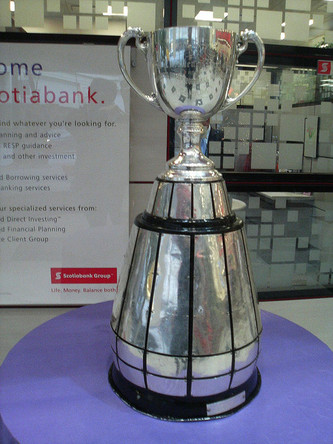 "The CFL Grey Cup in 2006" image by roland (Roland Tanglao) "The CFL Grey Cup in 2006" image by roland (Roland Tanglao) My latest DeHaan Services article, " The First Free Event for Grey Cup 2013 in Regina", continues a popular annual topic. Last year Toronto hosted the Grey Cup. I wrote a pretty popular article about the precious few free celebrations associated with the Canadian Football League's championship game (and festival), including the parade.This year Regina hosts the Grey Cup Festival. So although it's not an "annual Toronto event", my blog will cover the freebies anyway.
Continuity in a Follow-Up 2013 Grey Cup Article
( Added this section Nov. 17, 2013): I followed up the above article with " More Free Events for the 2013 Grey Cup in Regina".
I was pleasantly surprised to find a dozen free events in Grey Cup Festival week; more if you count the repeating items. This list of free Grey Cup events should find more favour among hard-core sports and music fans, compared to the first which had a decided "arts" appeal.
One Writing Tip for Continuity
(Updated this section Nov. 17, 2013, after added the second DeHaan Services article).
A standard piece of advice for writers, and especially for bloggers, is to build a niche and stay within it. Your readers want to feel comfortable with your style and your topics. On the other hand, you have to write something novel from time to time; otherwise you become the boring old geezer who always tells the same tired story.
Here I've publicized two articles that follow one theme in my blog: free or frugal annual events. However, I've broken away from my usual geographic limits of Toronto and its suburban neighbours.
Will this article attract new readers who specifically want to learn how to do the 2013 Grey Cup Festival in Regina "on the cheap"? Or will it be ignored by loyal readers who really only care about Toronto? It's an experiment.
The writing tip is to take deliberate steps to expand your niche: make changes but with some continuity. Stretch one dimension at a time, but keep another constant.
With these articles about the Regina Grey Cup Festival, I've stretched my geography while keeping the "cheap" approach. Perhaps some other time I will write about spending big bucks in Toronto: that would reverse the dimensions that change or stay constant.
So feel free to expand your niche when it may make sense for your current readers and also attract new ones.
 "Two Dogs in Halloween Costumes" image by Pets Adviser "Two Dogs in Halloween Costumes" image by Pets Adviser Who can resist happy Halloween dog pictures? Hopefully not the readers of my latest DeHaan Services article, " Dog Costume Halloween Parades in Toronto and the GTA 2013". This article points to three events in and around Toronto for pet owners to enjoy a Hallowe'en event with their dogs. It adds a bonus item for an annual event in a New York City park; one with almost a quarter of a century of history.
Squeeze in 2013 Hallowe'en Just for People
( Added Oct. 24, 2013): Let me also publicize " 2013 Halloween Events in Toronto and the GTA", which I wrote a few days later. We can't let the dogs have all the fun, can we? By the way, that new article is an example of "dogged" pursuit of this Hallowe'en theme, as well as the fact that it's a great time of year to write in the niche of annual events.One Dogged Writing Tip
This writing tip uses "dogged" in the sense of "persistent" or "persisting".
We all hope that our very next blog post will go viral, to catapult us into the ranks of well-known and highly-paid writers.
In the mean time, be persistent. Doggedly pursue your goal. If you have a schedule, stick to it. Meet your deadlines.
At this moment, I'm suffering more from "too many timely topics" than from "lack of inspiration". It can be difficult to fit all the tasks into the timeframe.
By the way, I'm not saying "keep banging your head into a wall". Keep working, but do be open to new techniques and new inspirations.
Meanwhile, enjoy what you do doggedly, just as these animal lovers enjoy dressing their dogs in Hallowe'en costumes.
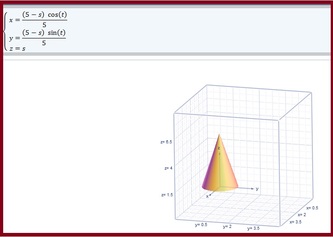 "Simple Graph of One Cone" : image by Mike DeHaan "Simple Graph of One Cone" : image by Mike DeHaan Decoded Science published my " Hypatia Taught Conic Sections and Diophantine Equations" this morning (Oct. 17, 2013). This Weebly blog post features two images that I created for that article about the math used by Hypatia, a Greek philosopher who lived in the early Christian era. She's famous for being the earliest female mathematician, and also for her rather gruesome demise. As it turns out, I did not use the above image for my Hypatia article.
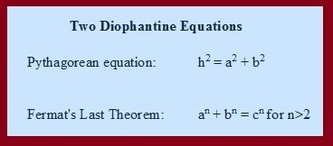 "Pythagorean Equation and Fermat's Last Theorem" : image by Mike DeHaan "Pythagorean Equation and Fermat's Last Theorem" : image by Mike DeHaan As I've noted in some other posts, my reason for publishing my home-made images in a blog belonging to me is simply to establish copyright.
Decoded Science has begun a policy of linking each image in their articles to the online source. So I've earned a free link to this page by pre-publishing my image. Sweet.
An Image for my Next Article, on Statistics
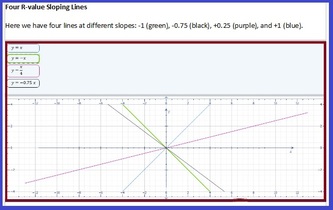
Another Future Article on Turing Machines
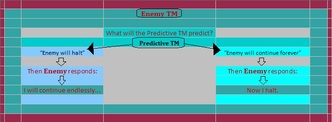 "The Enemy of the Predictive Turing Machine" by Mike DeHaan "The Enemy of the Predictive Turing Machine" by Mike DeHaan ( Added Oct. 28, 2013): Another day, another apology for yet another self-made image which someday should grace a Decoded Science article. Sorry to post and run, but sometimes one must make haste. (Updated Oct. 29, 2013): I should write a separate promotional piece for " Free Will, Determinism and Turing's Halting Problem" since I've already thought of the right writing tip. But just now it's late, "and there are wolves".
One Inspirational Writing Tip
I was inspired to write my Hypatia article because of an article about her in a sister online magazine, Decoded Past. (I linked to that other article from my Decoded Science article, so you can read it too).
Today's writing tip is to take your inspiration where you find it.
I've said something similar about keeping your eyes open for topics before. But unless you generate an inexhaustible supply of concepts and ideas on your own, you will need to actively seek and find inspiration from what others write, say or do.
In this particular case, I noticed that the Decoded Past article mentioned Hypatia's math, but didn't say anything about what she actually studied or taught. Since that was right up my alley, I stepped up and delivered.
You can do the same when you find something that interests you and touches near your own writing niche. Find that inspiration, figure out what the first writer missed that you can supply, and "just do it". Just enhance your karma with a link back to your inspiration article; that author deserves it.
Thanks for reading about my process for writing about the math of Hypatia of Alexandria.
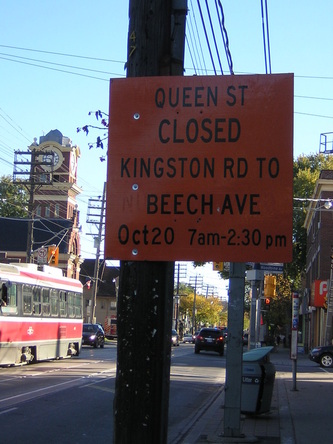 "Old Toronto Road Closure Sign for Waterfront Marathon" image by Mike DeHaan "Old Toronto Road Closure Sign for Waterfront Marathon" image by Mike DeHaan For years, I've complained that the old "Road Closed" signs in Toronto do absolutely nothing to promote marathons in Toronto. My recent DeHaan Services article, " 2 Signs of the 2013 Scotiabank Toronto Waterfront Marathon", shows that the Toronto Waterfront Marathon 2013 should have some decent promotional signs along with the old-fashioned scary postings inspired by a Hallowe'en colour scheme. Sorry, you absolutely must click the link to see the new and improved sign for the Toronto Waterfront Marathon 2013. As a bonus for those in Toronto, my article also notes the date and time, the major road closures, and adds my personal spectators' guide so you can see the runners where determination counts the most.
One Promotional Writing Tip
Today's writing tip suggests you consider how your web site or your writing style promotes itself.
Many marketing gurus claim you need to change the colour scheme or font, from time to time. Slap on some fresh paint to draw your readers' attention. "Ooh, shiny!" is the response to evoke.
On the other hand, your regular readers find your content meaningful or helpful; and they now know how to navigate your site. Don't change everything; at least, not all at once.
For example, I've adopted "bold style plus colour" to highlight "writing tip" in this blog. If I had planned this from the outset, and if I could code it as an XML style, I could change them all to "writing tip" so we could have consistency as well as change. But I'd either have to go back to each article and change the style manually, or leave articles inconsistent where I made the switch. Is that worth it?
My true writing tip is to look for the features that currently detract from your marketing appeal, and then fix those errors. Don't just change something for the sake of marketing. Instead, change the worst feature that works against the appeal your writing should have.
Those ugly old black-on-orange signs in Toronto were intended to scare away drivers; and they do a fine job. The new signs are more informative, and should attract spectators to come cheer the runners in the Toronto Waterfront Marathon 2013.
What will you change to incite your readers to cheer your next article?
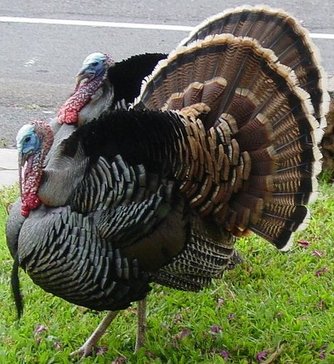 "Image of Twin Tom Turkeys in Hawaii" by Alan L "Image of Twin Tom Turkeys in Hawaii" by Alan L Personally, I think of Canadian Thanksgiving as the start of the busiest season of writing that features holidays in a particular season of the year. So, although my recent " 2013 Thanksgiving Family Activities in Toronto" simply highlights frugal things to do in Toronto, like many previous articles, it does feel like the prelude to Hallowe'en and the winter holidays including Diwali, Christmas and Kwanzaa. This current article puts the emphasis on free or frugal activities for the family. It even stretches beyond Toronto and the GTA (Greater Toronto Area) with one of the suggestions.When is Thanksgiving in Canada? It comes in mid-October. Canadian turkeys are eaten a few weeks earli rather than waiting for November in the USA.
One Well Seasoned Writing Tip
It's easy to find seasonal topics for your articles, when holidays and festivals come thick and fast.
Today's writing tip is to plan out your topics ahead of time. A couple paragraphs ago I added three seasonal holidays to whet your appetite. Simply check your calendar for the next few months. Your readers will be searching for information about those holidays.
With so many special days coming so quickly, it's important to schedule your writing. I've already seen Hallowe'en advertising as well as articles, so others might be ahead of you.
Once we get into early 2014, it may seem that the holidays are less frequent. My advice still holds: check your calendar, and plan to cover your niche. St. Valentine's Day is not the only February event for Americans. People travel for more than just spring break week. Children need activities, and cooks need recipes, for more than Easter Sunday.
With a bit of planning, your well seasoned writing can make good use of holidays all year.
|
 "Kurt Godel" via Arithmeum Museum in Bonn
"Kurt Godel" via Arithmeum Museum in Bonn 









 RSS Feed
RSS Feed